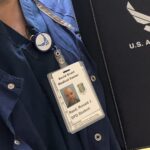
My name is Ronald Reed, CSPDT, and I have dedicated my career to advancing the field of Sterile Processing. During my tenure as an SPD instructor and preceptor for a California vocational college, I recognized an unmet need in the veterinary sciences. This realization led to a groundbreaking collaboration with the East Bay SPCA Spay and Neuter Clinic, where we developed the first hands-on training program for SPD technicians in a veterinary setting. This article chronicles the journey of this innovative program, highlighting the collaborative efforts, workflow processes, and the success stories that emerged from this initiative.
Developing the Relationship with Oakland ASPCA
The partnership with the East Bay SPCA Spay and Neuter Clinic began with a vision to enhance the sterile processing capabilities within veterinary settings. Under the guidance and support of the clinic’s manager, Tiffany Coughey, we embarked on a mission to create a robust training program that would benefit both the students and the clinic.
Establishing Workflow Processes
One of our primary goals was to develop efficient workflow processes for SPD technicians handling veterinary surgical instruments. The process we established included:
- Receiving Dirty Spay and Neuter Sets: Students were trained to receive and inspect used surgical instruments, ensuring they followed all safety protocols.
- Manual Cleaning: The initial cleaning phase involved manually removing organic debris from the instruments. This step was crucial for preventing contamination during sterilization.
- Mechanical Sterilization: After manual cleaning, the instruments were subjected to mechanical sterilization using autoclaves. This ensured that all pathogens were effectively eliminated.
- Storage: Once sterilized, the instruments were carefully stored in sterile conditions, ready for use in future procedures.
This comprehensive workflow not only ensured the highest standards of cleanliness but also provided students with valuable hands-on experience in a real-world setting.
Implementing an Instrument Tracking System
To further enhance the efficiency and reliability of the SPD processes at the clinic, we developed an instrument tracking system. This system allowed us to:
- Monitor Instrument Usage: Track which instruments were used in each procedure and their cleaning status.
- Ensure Accountability: Maintain records of who handled each instrument at every stage of the process.
- Optimize Inventory Management: Identify patterns in instrument usage and anticipate the need for replacements or additional supplies.
The implementation of this system significantly benefited the clinic, reducing the likelihood of lost or misplaced instruments and ensuring that all tools were properly sterilized before use.
Success Stories: Overcoming Challenges
One of the most inspiring aspects of this program was the success of our diverse group of students. Among them was a physically disabled man who faced significant challenges but was determined to complete the hands-on training program. His dedication and perseverance were remarkable, and he successfully mastered the skills required to excel as an SPD technician.
The image below captures a moment from our program, showing one of our students at the Oakland clinic. Here, the student is receiving a spay/neuter set and sorting the instruments as part of the pre-cleaning process.

Conclusion
The integration of the first SPD hands-on training program for veterinary sciences was a testament to the power of collaboration and innovation. By working closely with Tiffany C. and the East Bay SPCA Spay and Neuter Clinic, we were able to develop a comprehensive training program that not only benefited the students but also enhanced the clinic’s operations. This initiative paved the way for future collaborations and set a new standard for SPD training in veterinary settings. It is my hope that this program will continue to inspire and equip future SPD technicians to meet the evolving needs of the veterinary and healthcare industries.
References
- American Society for the Prevention of Cruelty to Animals (ASPCA) – Information on the role and activities of the ASPCA, including their spay and neuter clinics.
- National Association of Veterinary Technicians in America (NAVTA) – Resources and standards for veterinary technicians, including sterilization procedures.
- Journal of Veterinary Science & Technology – Articles and research on the importance of sterilization in veterinary practices.
- Association for the Advancement of Medical Instrumentation (AAMI) – Guidelines and standards for sterilization processes and sterile processing technicians.
- Efficiency in Veterinary Clinics – Case studies and reports on the impact of sterile processing systems on veterinary clinic efficiency.
- Instrument Tracking Systems – Information on the development and benefits of instrument tracking systems in medical and veterinary settings.


